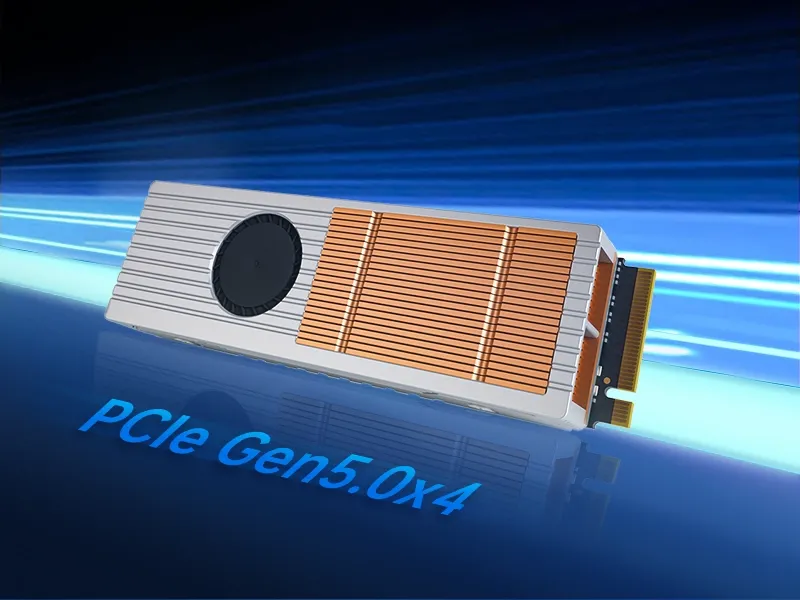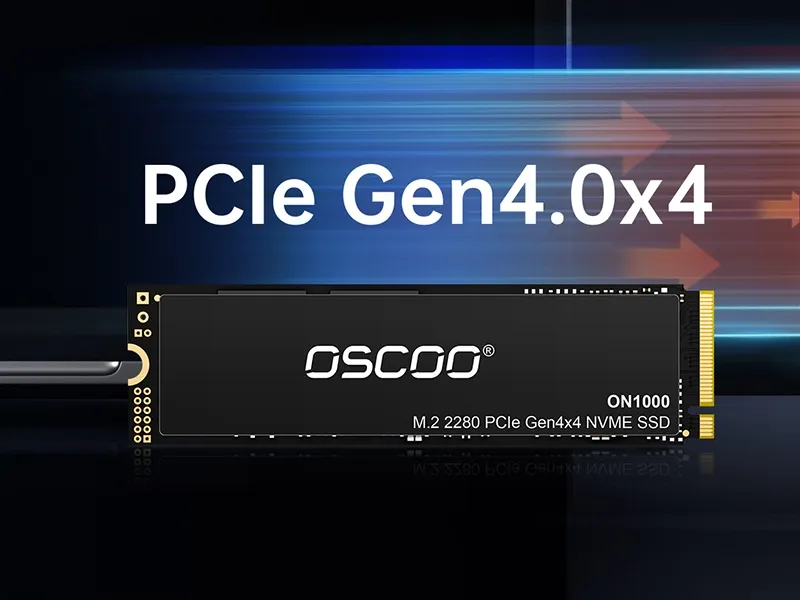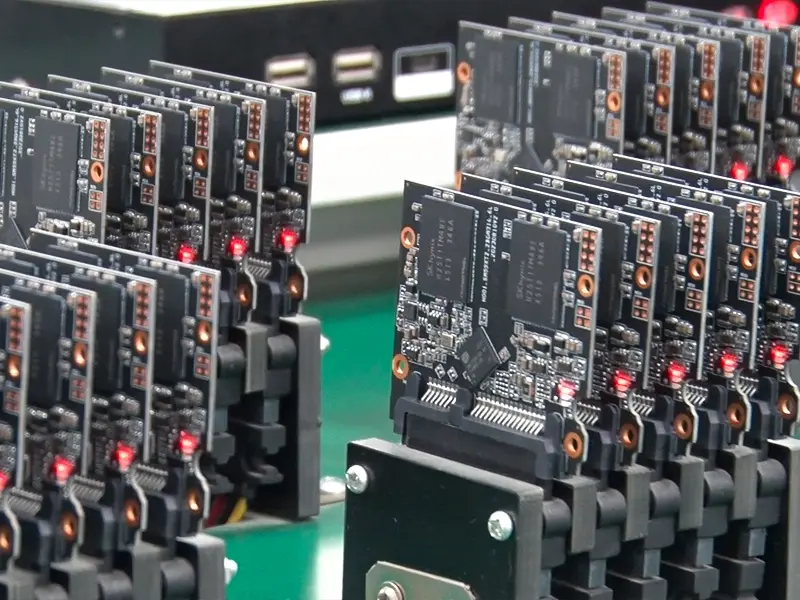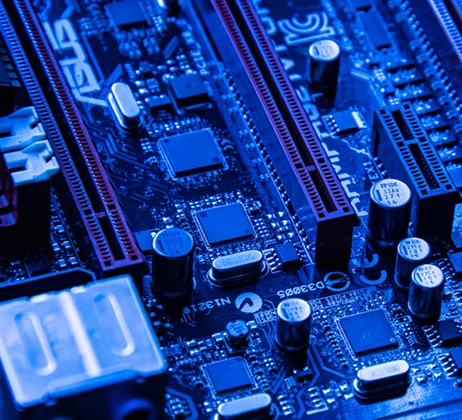Computer storage and SSD technology are rapidly improving with new SSD models, interfaces, firmware upgrades, and internal components. In this continuously changing environment, it becomes really important to catch up with the new trends if you want to thrive in the industry. We are talking about SSD wholesalers, vendors, or anybody working in the B2B SSD industry.
The basic features of SSDs like the storage capacity, read/write speed, etc should definitely be considered, but many other things are important to check as a wholesaler. As a wholesaler, in the B2B business domain, you generally buy products in bulk and resale to retailers, small businesses, or resellers. You should have a good stock of different SSD brands, types, capacities, etc. All these things are fine to take care of and as a business owner, you know all your stuff. But, in this article, we will tell you other important things that you should always keep in mind in today’s changing world of technology.
The global SSD market is projected to grow from USD 59.5 billion in 2024 to USD 166.1 billion by 2033, exhibiting a CAGR of 12.1% during 2025-2033. The client segment alone is expected to grow by 38.14 billion USD by 2025 and 2029. The technological advancements are already showing a great impact on the overall computing infrastructure. The storage bottlenecks can now completely be removed from most high-speed computers.
With the rising performance, improving storage capacities, and reducing price, the SSD market is offering new opportunities to the wholesaler. However, if you are left behind in having the required knowledge of today’s SSDs, it could harm your business negatively. So, without any further delays, let’s understand the important things you should always have an eye on in the SSD markets.
1. The Rise of PCIe 5.0 and PCIe 6.0 SSDs
Modern computers are getting faster and faster. To offer support for the faster peripherals, the PCIe generations are improving. With the new PCIe generations, the bandwidth and throughput of each lane are increased. The current popular and fastest PCIe interface for SSDs is the PCIe Gen 5.0. However, the Gen 6.0 SSDs are already in development. The switch from Gen 4.0 to Gen 5.0 was quick and the industry adapted pretty fast. Gen 5.0 drives are surely expensive and target high-end users. The Gen 6.0 drives are going to be much faster and target a different audience. Companies like Micron are already working on the Gen 6.0 drives and trying to eliminate the storage bottlenecks as best as possible. So, the demand is going to increase in the upcoming years for sure.

In the data centers and high-end server environments, the Gen 6.0 motherboards have already arrived and in the upcoming years, the requirements for the Gen 6.0 drives will emerge from there as well.
The point is that, as a wholesaler, you should be aware of the recent developments and trends in the SSD market in terms of PCIe generations. Along with this, you should know which drives are on the top in each generation and reach the highest limits. Now, because the Gen 3.0 and Gen 4.0 drives are still in good demand, you should not lose your focus on those less expensive and slower drives. All in all, have a look at the recent news and advances in terms of PCIe generations in SSDs.
Opportunities for SSD Wholesalers
1. Target High-Performance consumer segment
Gamers, overclockers, content creators, and enthusiasts are always on the lookout for the fastest components in the market. Professionals working in 3D space, 4K/8K video editing, animation, data science, and other high-end projects will always be your desired customers for these faster drives with the latest PCIe interfaces. You can partner with PC-building companies, creative industry vendors, etc.
2. Enterprise and data center demands
With the Gen 6.0 interface, with its application in the server environment, the bandwidth is doubled to 64GT/s over the older PCIe 5.0 interface. Cloud providers, IT resellers, servers, and big data centers can be the right customers for you with these faster SSDs.
3. PCIe Gen 5.0 as the mainstream SSD interface
Because Gen 5.0 is the currently fastest and latest interface with enough market potential, your focus should be to add more variety, price ranges, brands, etc to your inventory. The Gen 5.0 SSDs are going to be in the limelight for a good period of time. Even after we get the Gen 6.0 drives in the market, the Gen 5.0 SSDs surely have a long way to become obsolete.
4. Educate your buyers on PCIe generations
Putting an active effort into telling your buyers about the benefits of different PCIe generations is a good step toward increasing your growth potential. You should tell them why SSD generations matter when to go for Gen 5.0 stocks and what to do about the upcoming Gen 6.0 drives.
2. NVMe 2.0/2.1 Specification and Enhancements
NVMe (Non-Volatile Memory Express) is the interface used by the PCIe SSDs to enable parallelism and reduce latency. NVMe allows the SSDs to have many more queues that happen simultaneously. On 21st August 2024, the latest version of NVMe i.e. 2.1 was released. The earlier version NVMe 2.0, which is still found in most NVMe SSDs, was known for its consistent latency and performance. But, the latest 2.1 release came with other improvements like Live Migration, Key Per I/O, NVMe network booting, etc. All the new specifications and many others position the NVMe 2.1 as a robust solution for high-speed and low-latency demands.

NVMe is backward and forward-compatible. So, there will be no issues selling them to a wider range of audience. Although the NVMe version isn’t a very important specification that the normal user checks in enterprises, it could make a really big difference in the output. Also, understanding and then explaining this concept can be complex. So, having a proper knowledge of the potential benefits is important.
Opportunities for SSD Wholesalers
1. Benefits from Enhanced Security with Key Per I/O
Industries like finance, healthcare, defense, and government require the highest level of data security and encryption. SSDs with the NVMe 2.1 offer Key Per I/O gives unique encryption keys for each input/output operation. This helps in much better data encryption and protection. You can fulfill this new market demand with the modern SSDs that come with the NVMe 2.1 support.
2. Take advantage of the 5G infrastructure and edge computing
With the help of NVMe 2.1’s high speed, high availability, and low latency, these SSDs are most suitable for edge computing, especially in real-time processing. These SSDs are really important in smart cities, 5G networks, industrial automation, IOT, and modern computing. As a wholesaler, you can partner with telecom companies, IoT solution providers, smart city developers, etc, and provide your optimized NVMe SSDs to them.
3. Work with large-scale cloud providers
The NVMe 2.1 provides improved mobility to the virtual machines. Also, the live migrations allow an easy transfer of virtual machines between different hosts. With the NVMe 2.1, this migration can happen in real time without any downtimes. As a wholesaler, you can grab the opportunities to work with enterprises running hybrid clouds, data centers, and other virtualized environments. You can find good Cloud Service Providers or Managed Service Providers to work with. Also, companies offering the IaaS (Infrastructure as a Service) can also benefit from this new NVMe version.
3. Innovation in NAND Flash Technology
The NAND flash storage technology is continuously improving at a great pace. The evolution of new cell technologies like QLC, 3D NAND, and PLC (Penta-Level Cell) are opening new opportunities for both consumer and enterprise-level storage services. For wholesalers, because of the reduced prices of the NAND flash, it is easy to earn more profits by going for more storage capacities in the same form factor.

The modern SSDs are completely moved to the 3D NAND flash based on the charge-trap flash. Now, the SLC and MLC NAND flash have been saturated for the consumer market and are only found in enterprise environments. We can only see the TLC and QLC SSDs available in the client markets. However, the PLC NAND flash is going to arrive soon and this would open up new opportunities for much cheaper drives with more storage space in the same footprint. This comes with the drawback of lower endurance and lesser performance but there are going to be many opportunities. Many things are going on in the market like the 3D DRAM integration, eMLC NAND, etc. So, there can be many things that you can find interesting as a wholesaler. Let’s discuss them all.
Opportunities for SSD Wholesalers
1. Target Hyper-scale data centers and enterprises with QLC and PLC SSDs
This might sound counter-intuitive because we just discussed that in the enterprise environments, only SLC and MLC/eMLC SSDs are used. However, there are applications for TLC, QLC, and upcoming PLC SSDs in enterprise environments as well. This mainly includes deploying SSDs where high storage density is crucial rather than the performance, endurance, or reliability. Archival storage and content delivery are some of the good examples.
2. Provide affordable storage solutions with QLC SSDs
It is very important to educate users about the possible drawbacks of the QLC SSDs before serving them as a cheap storage solution. When targeted to a budget-sensitive audience, the QLC SSDs open up new opportunities to make more revenue.
3. Compare different NAND specs
NAND flash isn’t just about the type of cell i.e. SLC or TLC. There are other NAND specifications you should know like the NAND type, technology, topology, die size, word lines, Die Read/Write speed, page size, etc. All these things can make a big difference in the overall performance of any SSD. Many times, you’ll find even the cheap SSDs offering great NAND specs and expensive ones saving money compromising this important aspect of storage.
4. HMB and DRAM-Less SSD Technology
With the NVMe 1.2, the HMB technology was introduced in SSDs. This enabled the DRAM-Less SSDs to use the computer’s memory as the Host Memory Buffer. The DRAM-Less SSDs don’t have a dedicated DRAM chip to help with an SSD’s critical tasks like handling FTL (Flash Transition layer) or acting as a buffer. However, the HMB can act as a DRAM but with some disadvantages mainly in terms of performance.
DRAM-Less SSDs often come in the category of affordable and efficient SSDs. However, there can be some intentional usage in order to increase the DRAM size or reduce the price of an SSD. DRAM-Less SSDs also consume less power and generate less heat. However, there are some drawbacks like slower initial read/write speed and more NAND wearing. With the DRAM-Less SSDs, you can offer flexible pricing models and focus on the mid-range segment as well. Most of the low-end and cheap SSDs would have no DRAM and this could be beneficial on many levels for both the seller and buyer. Again, it is important to educate the buyers about the possible drawbacks of the HMB or DRAM-Less SSD designs.
Because DRAM-Less SSDs do not have a DRAM chip, people think these SSDs are a waste of their money. However, the reality is opposite. Many DRAM-Less SSDs compete directly with other DRAM SSDs without any significant difference in performance or reliability. It is true that they have different sets of audiences but they have many applications where price, temperature, and power consumption are serious concerns.
Opportunities for SSD Wholesalers
1. Target OEMs and Budget-Conscious customers
In the entry-level systems and budget notebooks, the DRAM-Less SSDs can serve as a great way to reduce the product’s price. You can create contacts with the OEMs as well to increase your product’s reach and find potential bulk buyers. HMB SSDs can add to significant cost-saving and revenue opportunities. However, the main focus should never be on these drives because they are generally focused on the low-end and mid-range SSD segments.
2. Get into IoT and Embedded applications
HMB SSDs are energy-efficient, cooler, and durable. This makes them a perfect fit for IoT devices, industrial applications, embedded systems, and other low-power devices. In the home devices, sensors, automation, automobiles, and many other industries, the HMB SSDs can offer a great balance between price and performance. In industrial IoT systems, you can sign long-term contracts with vendors and companies. Getting in touch with the embedded system manufacturers can help you sell your DRAM-Less SSDs labeled as efficient and compact drives.
3. Target buyers with read-intensive workloads
Because the DRAM-Less SSDs perform the worst in write-heavy workloads, they can offer good results in read-heavy operations while being cost-effective in both consumer and enterprise environments. The major read-intensive SSD applications and areas can be backup storage, media servers, hosting providers, media servers, etc. You can find opportunities in these areas with the DRAM-Less SSDs.
4. Expand into emerging markets with budget-friendly options
DRAM-Less SSD designs can give buyers a cost-effective storage solution in price-sensitive markets. For you, as a wholesaler, DRAM-Less SSDs can provide a good entry point in these emerging markets. You can focus on Africa, South Asia, Latin America, and other evolving regions to find growth opportunities. In these markets, you can do things like webinars, volume discounts, and subscription models.
5. Integration of SSDs in AI and Machine Learning
AI models train on big sets of data. To process that data, there is always a need for storage. This requires a high-performance and low-latency storage medium in huge capacities. Hard drives can’t handle the AI workloads because of their intense I/O operation demands. NVMe SSDs are most suitable for them. Because AIs are trained mostly by big corporations, the need for high-speed enterprise SSDs is always going to be there.
There are many steps of AI and machine learning involving three major data processing levels. The first one is data ingestion and reprocessing where large datasets are read, prepared, and filtered. After that for training the AI using machine learning, graphics power is utilized through the GPUs where again high data read/write speeds are required. After that, for deployment, low-latency SSDs are required to process the requests in real-time.
Not only high-speed and low latency, but for AI training, high endurance, and high-efficiency SSDs are required. These things open up a lot of opportunities for a wholesaler on a massive scale. Some of the key opportunities are as follows.
Opportunities for SSD Wholesalers
1. Providing High-Performance SSDs for AI Model Training
The AI research labs, hyperscale cloud providers, AI IT companies, and enterprises training their AI models are the right target customers for you. You can provide them with fast SSD solutions in the Gen 4.0 and Gen 5.0 categories. Research about the SSDs offering the best performance without compromising on the latency. Also, look for the TBW and DWPD numbers to ensure endurance and reliability. You can also partner with the AI accelerator and GPU providers and provide bundled services or products.
2. Target AI Data centers
Cloud AI providers, AIaaS (AI as a Service), research universities, data curators, and server providers are going to be the ideal customers for you. The data centers require fast SSDs because of the multi-node AI training that is trending these days. You should find the right U.2/U.2, EDSFF SSDs with good performance, high endurance, and high IOPS.
3. AI in Healthcare and Life Sciences
Hospitals, research centers, biotech companies, and AI-powered healthcare platforms are always in need of better and faster storage mediums to train their AI models and even deploy them. Latest technologies like AI-driven genomics, AI diagnostics, and medical imaging are evolving pretty fast and hospitals are adapting to this change. You can easily find your clients in any part of the world and grab growth opportunities in this new field.
4. Target AI startups and Enterprises
Because everybody is now curious about AI and machine learning, the number of new AI startups has increased. These can be your big customers buying a large number of drives because of their dedicated storage needs. Because AI is all about the data, there is always going to be a need for fast, secure, and reliable storage devices. So, find your opportunities with the new and established brands working in the field of AI.
6. Latest SSD Security Features and Enhancements
Data security is one of the biggest concerns in both consumer and client SSD markets. Some of the popular and important security features are hardware encryptions like AES-256 Encryption, Self-encrypting drives, and TCG Opal security protocol. External SSDs come with fingerprint security options as well. In some SSDs, tamper detection and secure wipe options may be available. Secure boot and firmware integrity are some other major security enhancements in today’s SSD environment. As a wholesaler, you should have the knowledge of these security features and gain profits based on them.

Features like secure erase and encryption can help big clients and end customers protect their data from unwanted threats. Now, these extra features might add to the overall cost of the SSD but they are really important today because everything going online. Specific industries might be in need of these features much more than others. Let’s dig deeper to find some opportunities using these advancements.
Opportunities for SSD Wholesalers
1. Target specific industries
Some industries or areas like defense, healthcare, government, education, finance, etc need extra care for their data. To these clients, supply the SSDs with the best encryption features, advanced security protocols, and self-encrypting drives. Check the levels of firmware security and update the parameters of the SSDs you are providing to your clients.
2. Provide value-added services
Services like data backups, data recovery, data migration, etc can be provided to your clients on a commission basis. This can open up new opportunities for your business and extra trust for your client. However, as technology improves, the level of threats also grows. So, staying updated on the latest trends is most important.
7. Background and Trends of NAND Price Increase
NAND flash memory was introduced in 1989 by Toshiba. From the 1990s to the early 2000s, the NAND flash was extremely expensive. We had to pay several dollars for some megabytes of NAND flash. However, over time, when the applications of NAND flash increased and it started reaching industries, research happened, and prices dropped. In around 2004, the NAND flash cost around 56$ per GB. Then, in 2020, the prices dropped more and NAND flash was available for 0.10 to 0.20 per gigabyte. Currently, we are seeing almost similar prices in 2025. All in all, we can say the prices have been reducing constantly.
Now, due to the wide adoption of the NAND flash in laptops, smartphones, cameras, tablets, and computers, the competition has increased and the prices are lower than ever. However, there are seasonal fluctuations due to supply constraints, geopolitical events, and student demand spikes. So, as a wholesaler, you should always be ready for these price changes. You should be ready because as the price of NAND flash increases or decreases, the brands react by increasing or decreasing the prices of their SSDs as well. So, you may end up in a situation where you have a stock purchased for a higher price but the market price is suddenly decreased. Now, as a wholesaler, you know the basics and you are surely always ready for this. But, as an opposite, it could be a big opportunity as well. Let’s see how you can grab them.
Opportunities for SSD Wholesalers
1. Focus on Core Component Price Trends
So, the basic thing is to keep track of the current market prices of the core components like the NAND flash, controller, DRAM, etc. From their prices and changes in pricing, you can easily detect what will happen to SSD pricing. If we look at the trends, the prices are generally decreasing in the long run. However, there are seasonal fluctuations as we discussed earlier. So, you should be aware of those changes.
2. Optimizing Inventory Management and Procurement Strategies
First of all, you can do demand forecasting by utilizing historical sales data and market trends. There are several ways to implement AI and machine learning to analyze patterns and optimize your stock levels. Alternatively, you can use the ABC analysis as well.
- A: High-value SSDs with low sales volume.
- B: Mid-value SSDs with moderate sales.
- C: Low-value SSDs with high turnover.
You can also deploy cloud-based inventory management systems or use RFID, barcoding, and IoT sensors for precise tracking of your stocks. For procurement, make sure to diversify your supplier base so that you mitigate your demand and supply risks.
3. Tracking Market Dynamics and Industry Information
You can follow reports from TrendForce, IDC, Gartner, etc to know the SSD market forecasts. Also, analyze the demands for specific types of SSDs like gaming SSDs or SATA SSDs. Know about the adoption of the latest technologies and demands for the older types of SSDs like PCIe 3.0 or 4.0. Stay updated on the NAND flash producers like Micron, Kioxia, SK Hynix, etc.
4. Customer Communication and Price Adjustment Plans
You should always try to negotiate bulk discounts and long-term contracts with reliable vendors. You can also use group purchasing strategies and partner with other wholesalers. On the customer end, good communication and education are necessary. You can tell them about the latest price drops and discounts running in the market. Get in touch with your suppliers about any clearing deals or other bulk purchase plans.
Conclusion
As an SSD wholesaler, there are always opportunities for you in the market. You just have to locate them in the right direction and in the right industry. As the SSD market is growing and is expected to grow, many other opportunities will open up for you. We hope this article has provided you with the guidance and information that you need to know and grow in the current SSD market. Thanks for reading!




